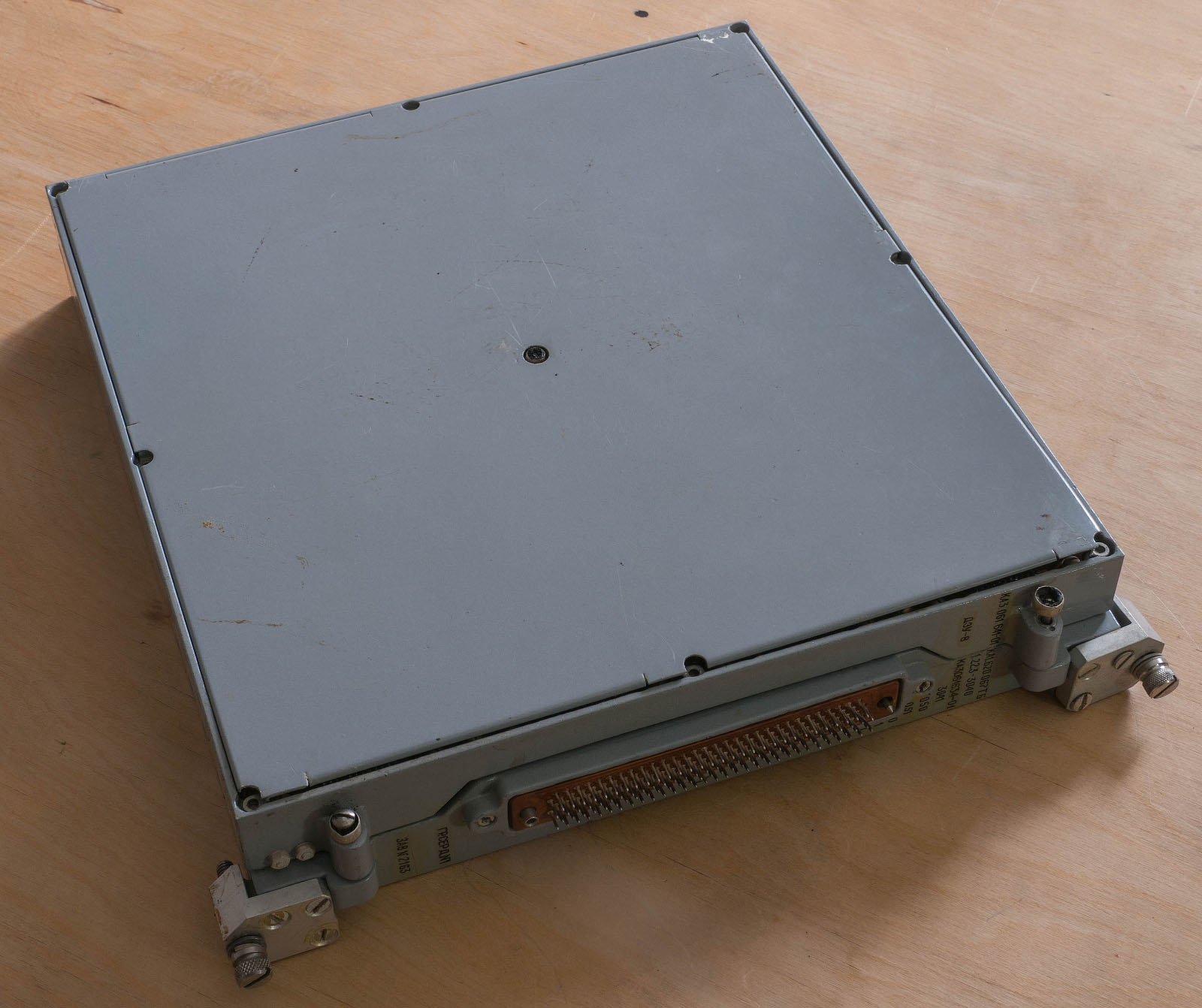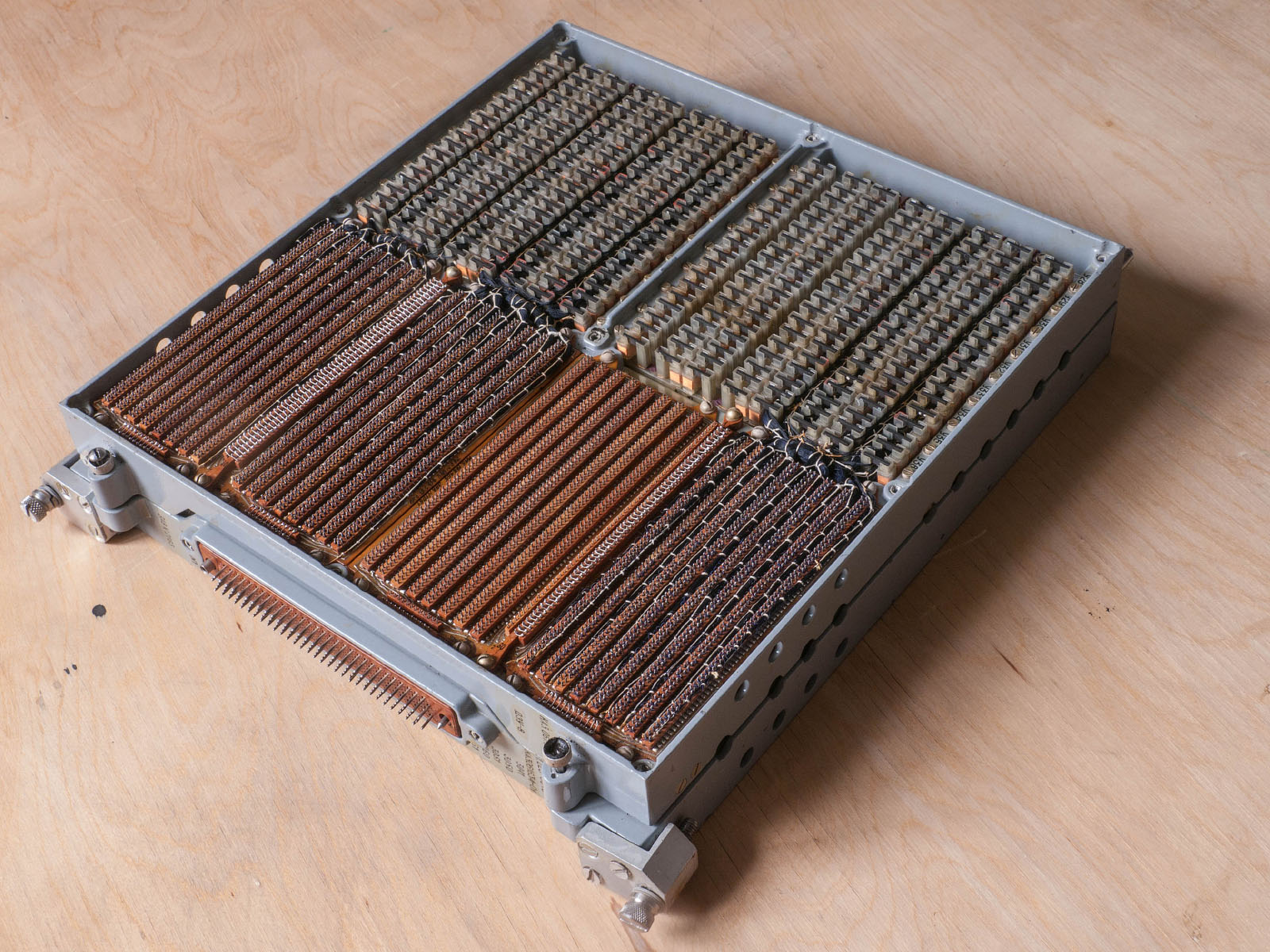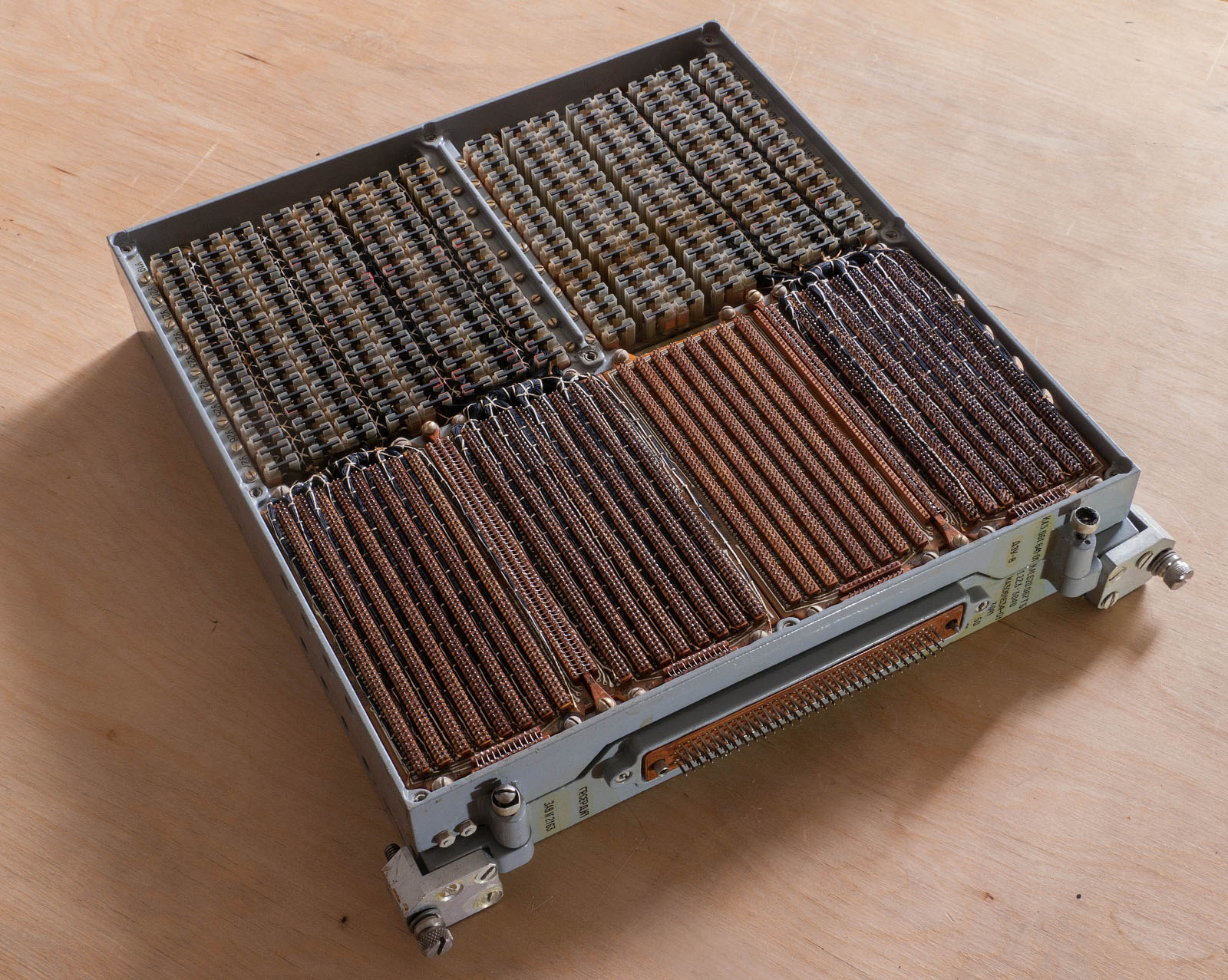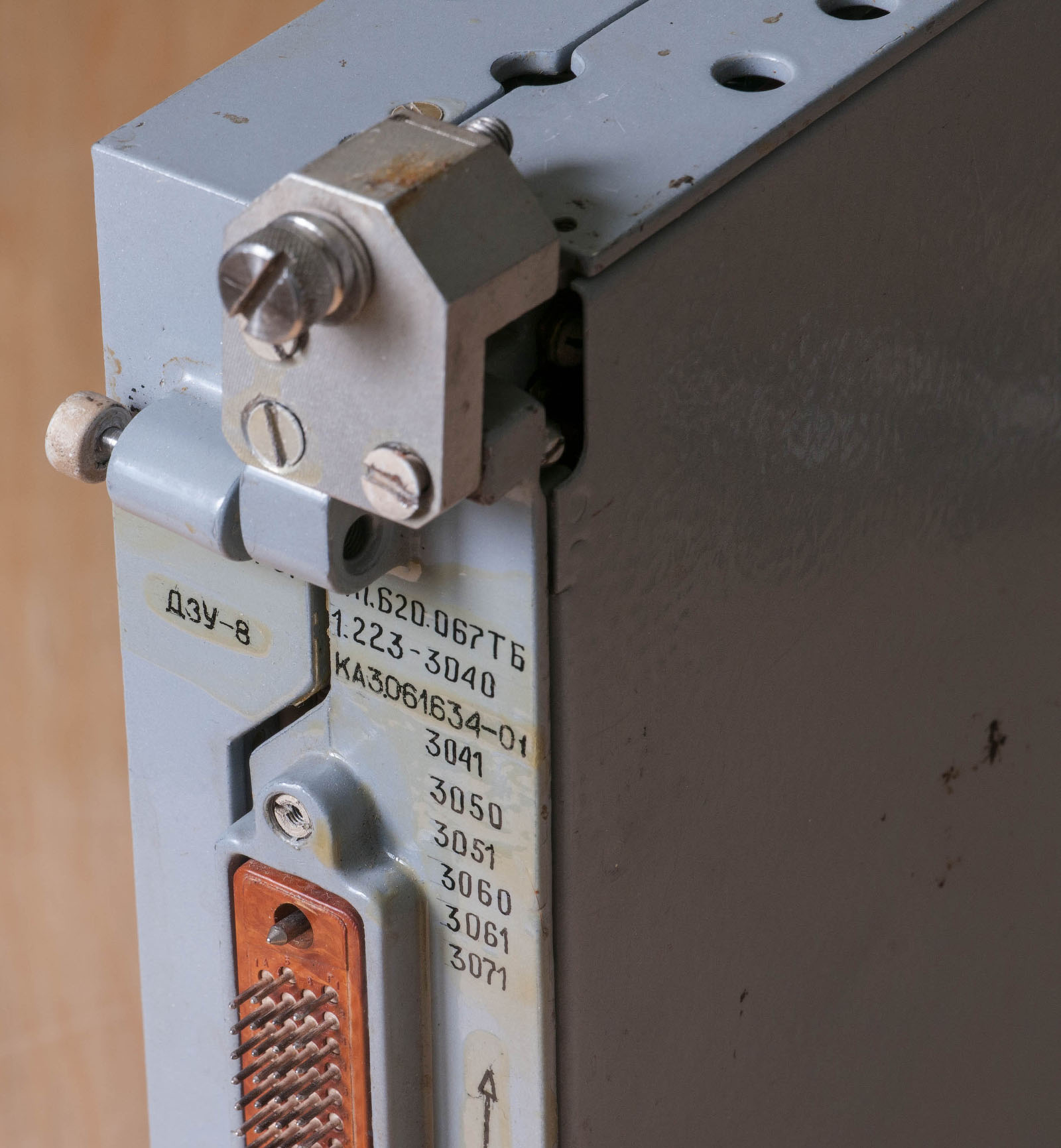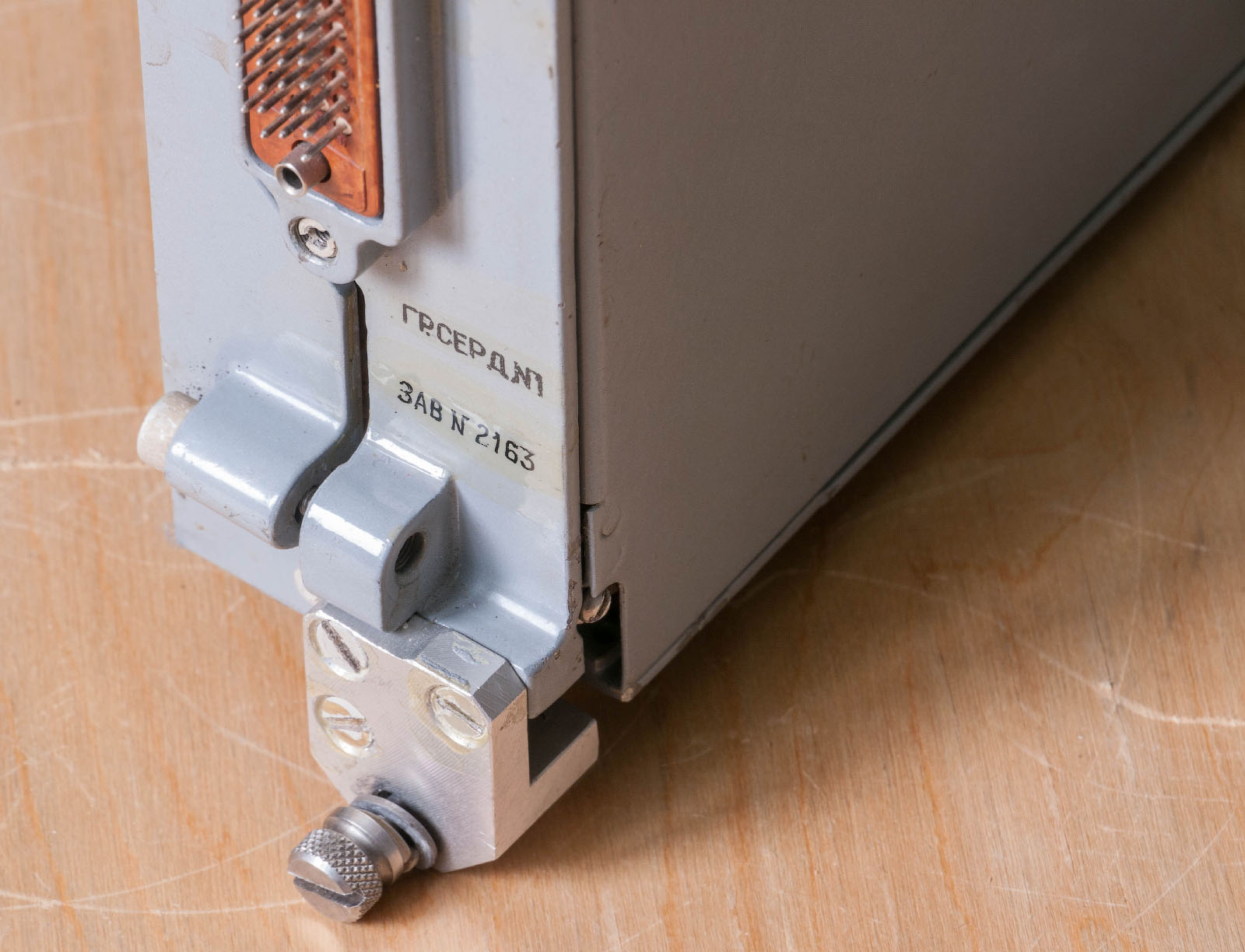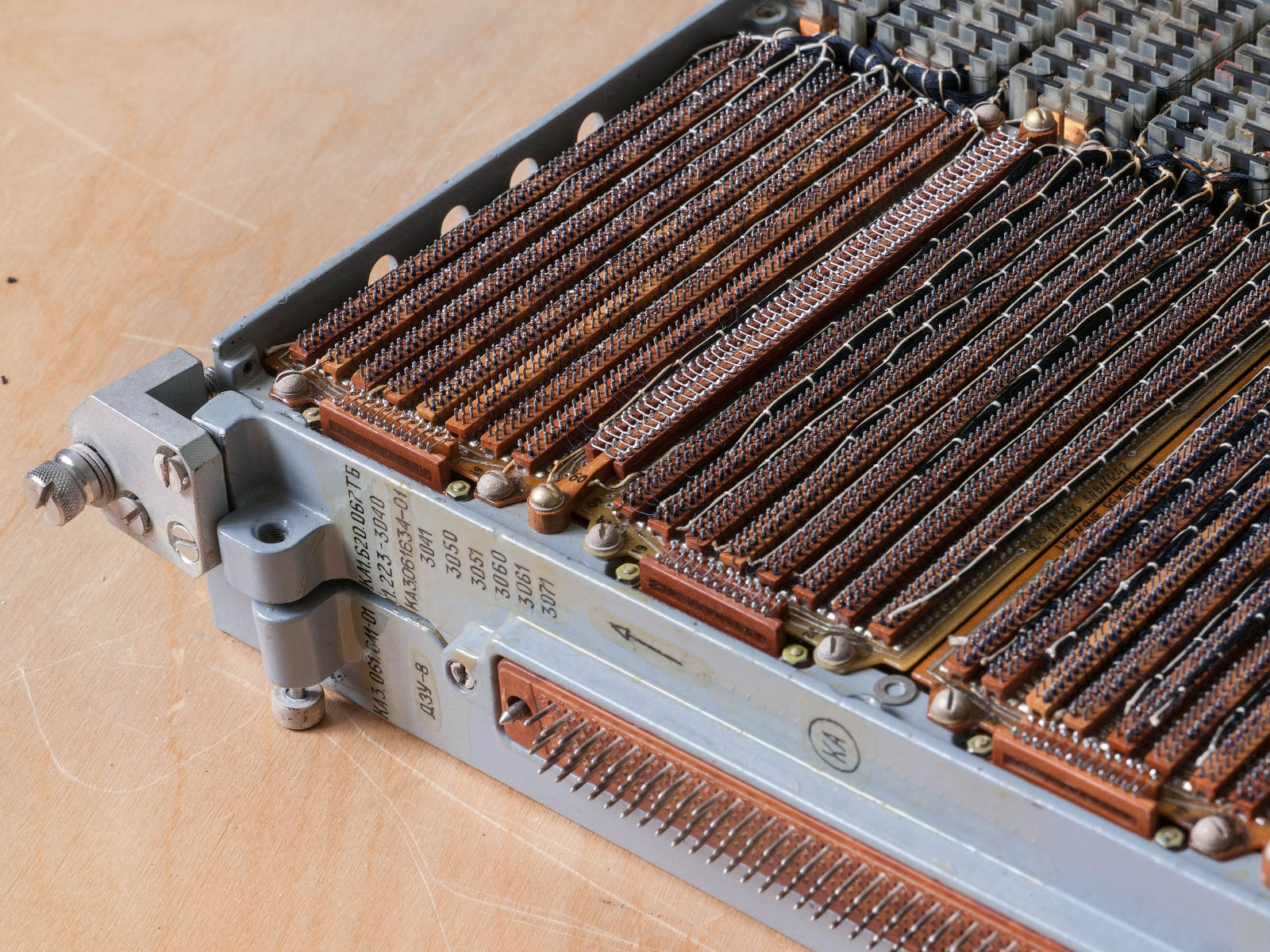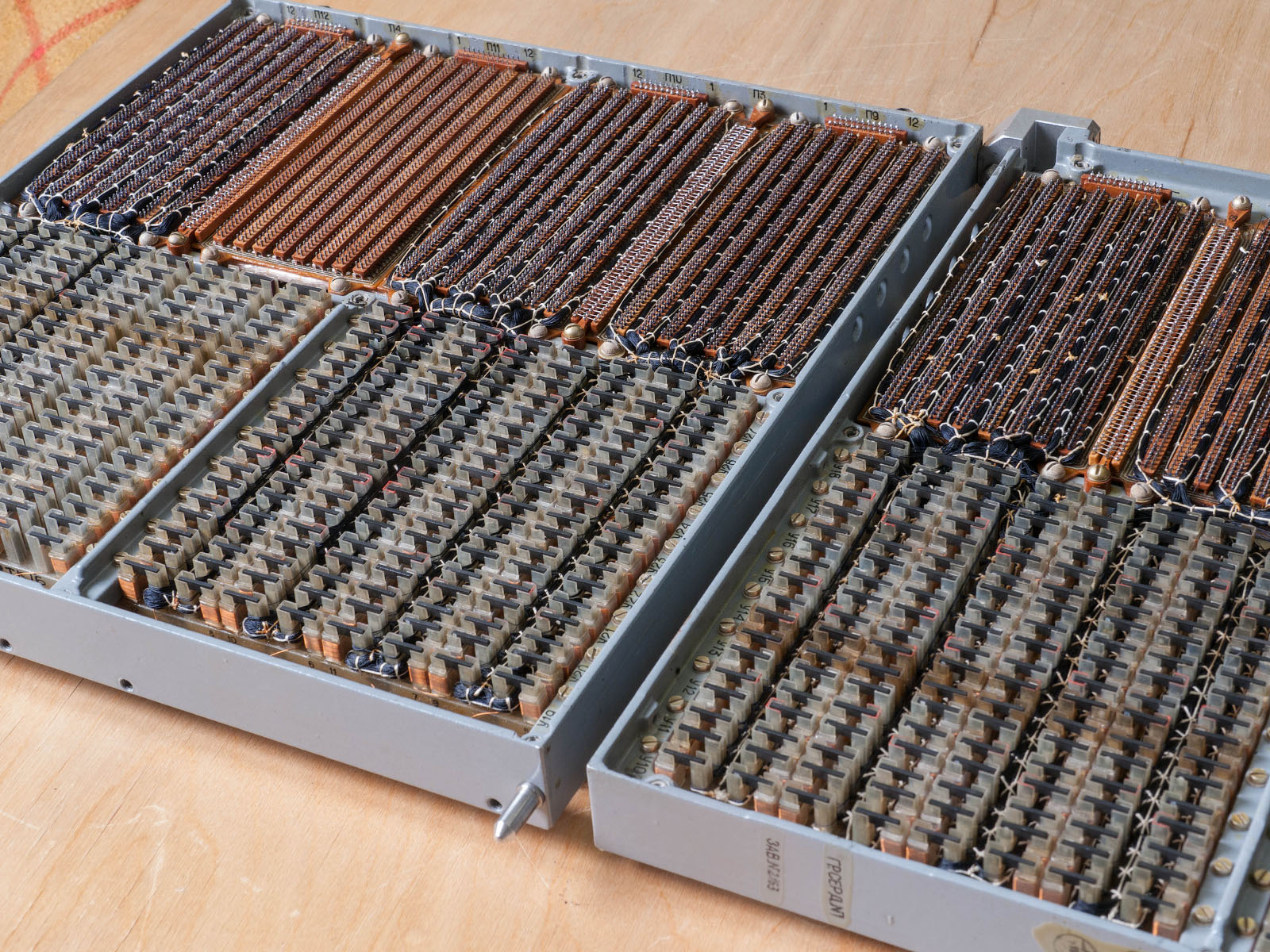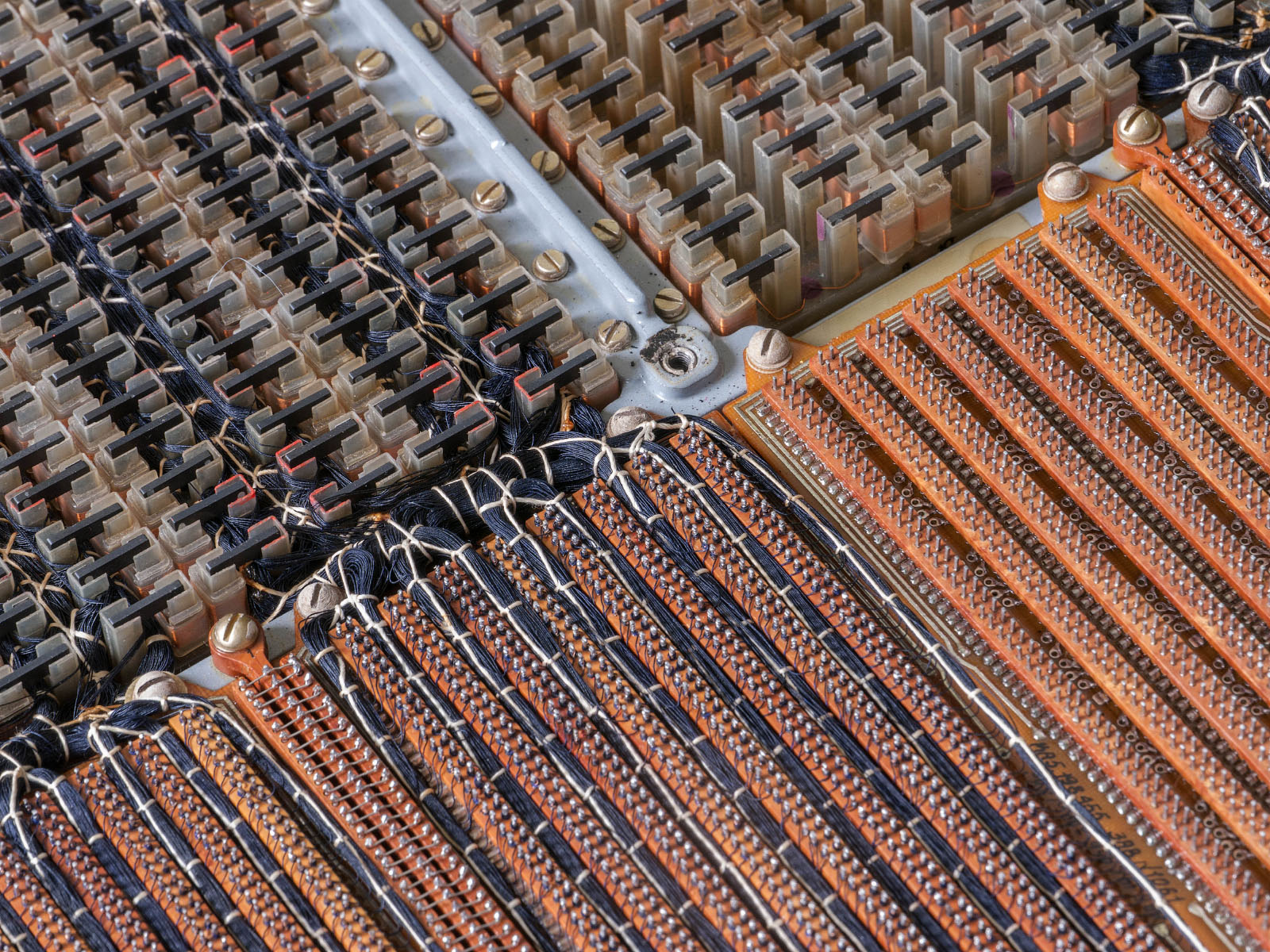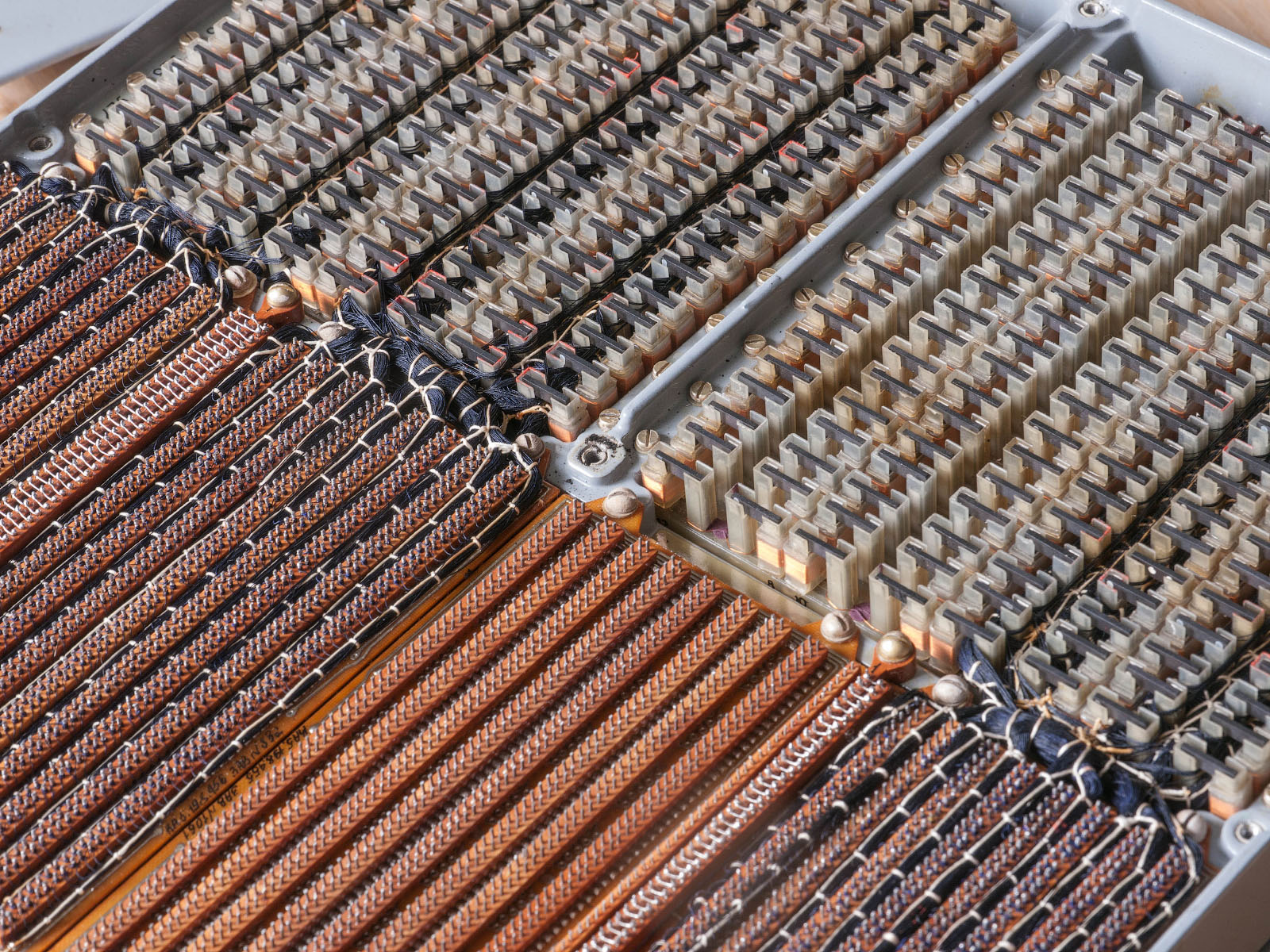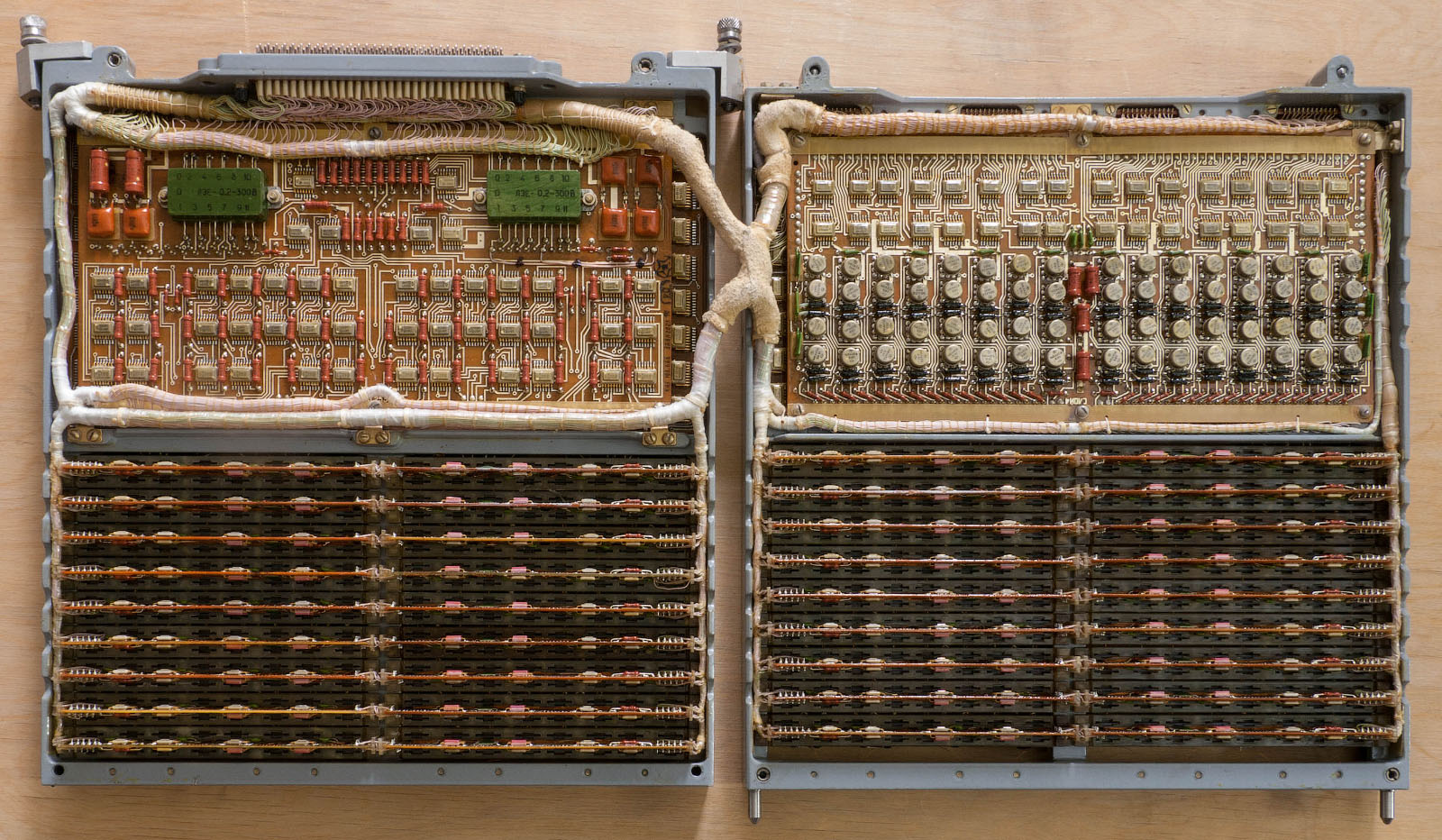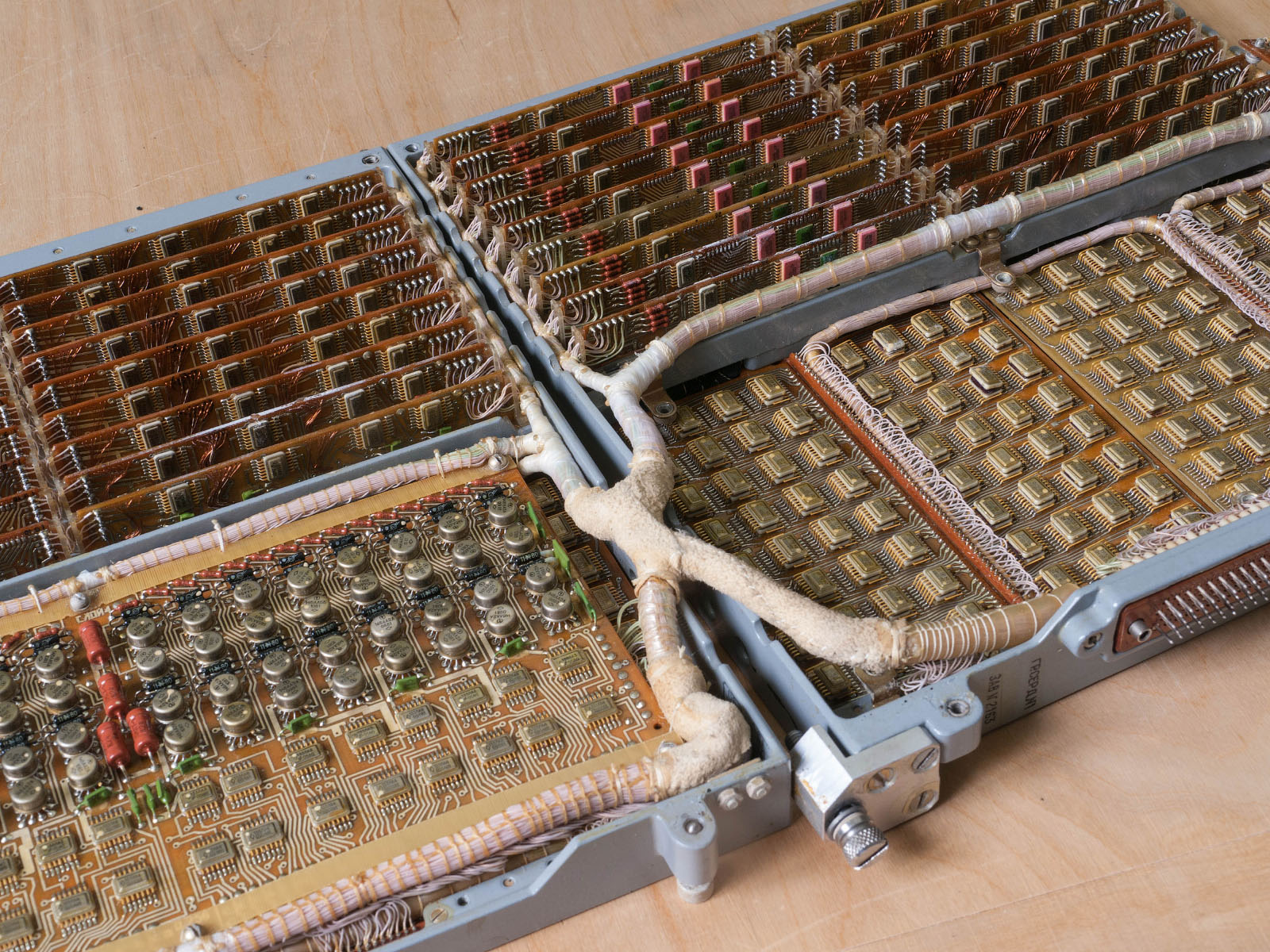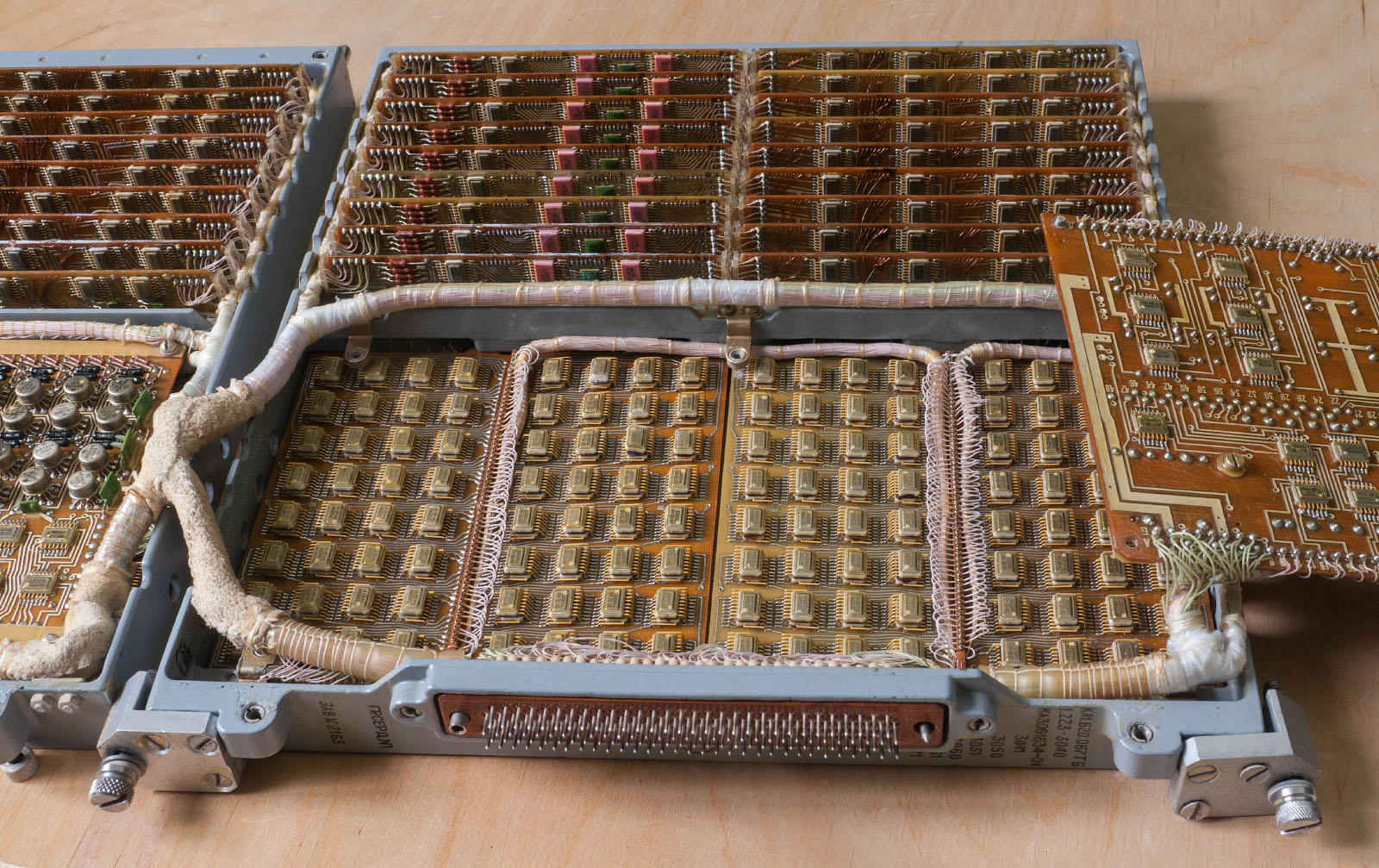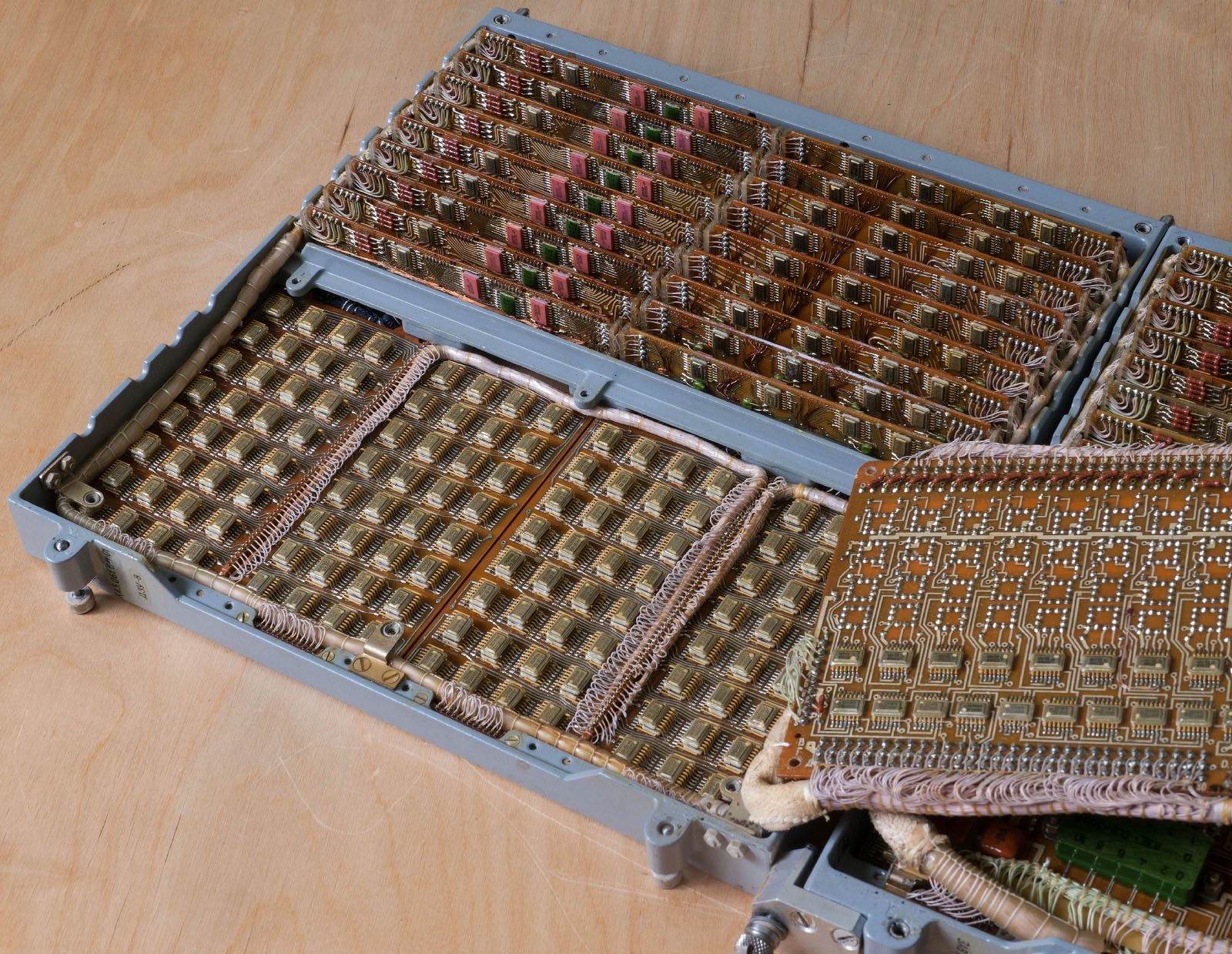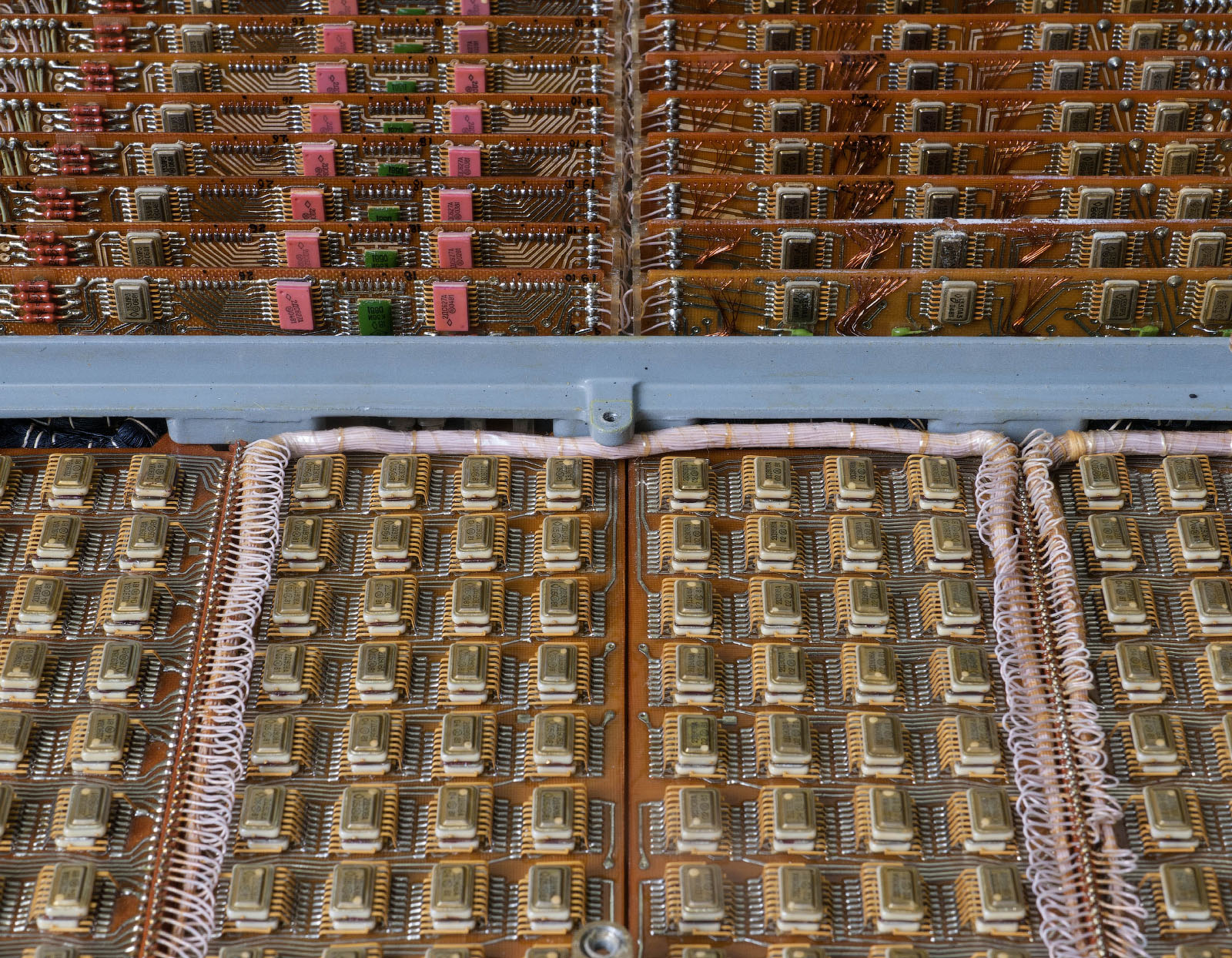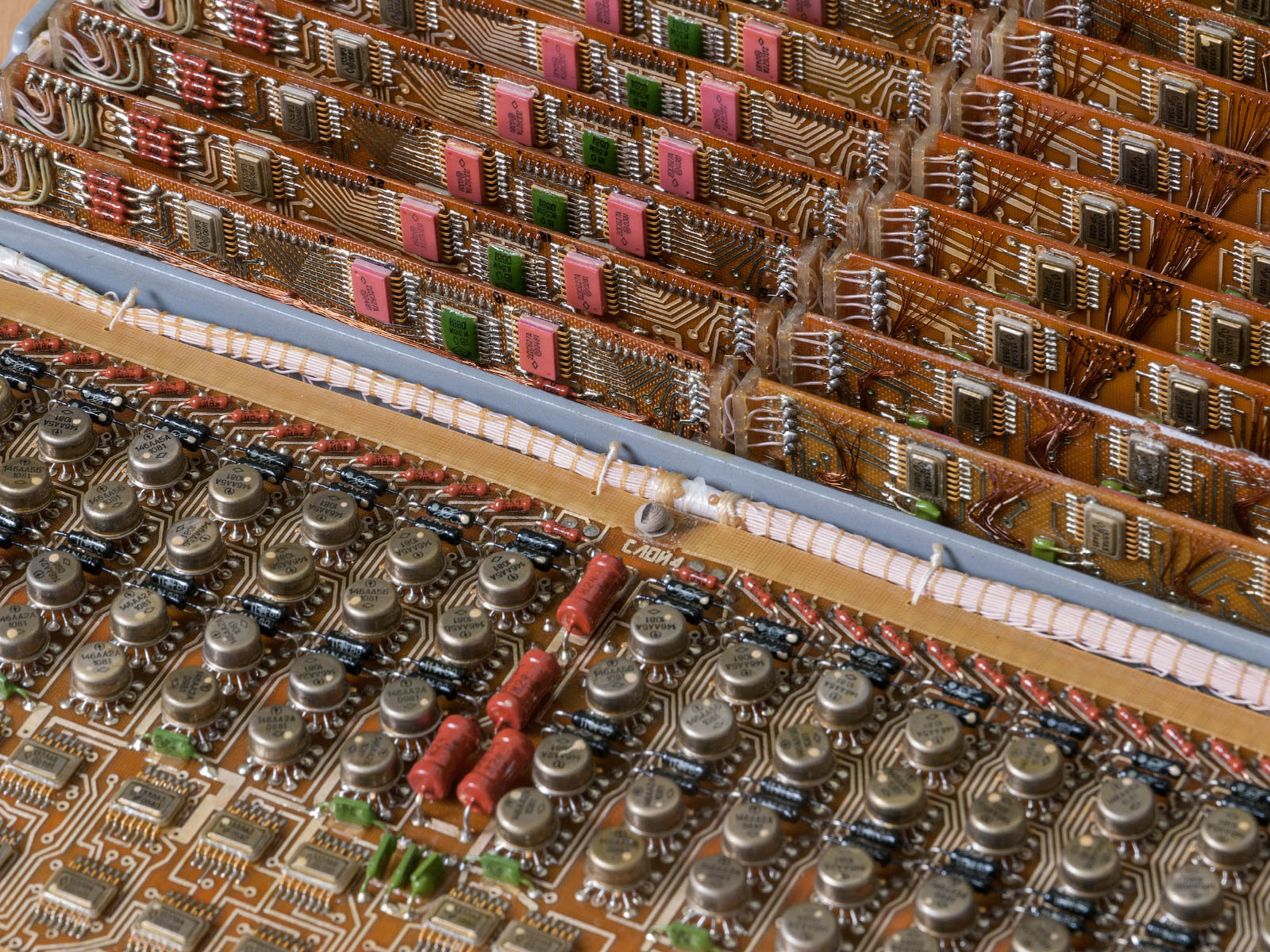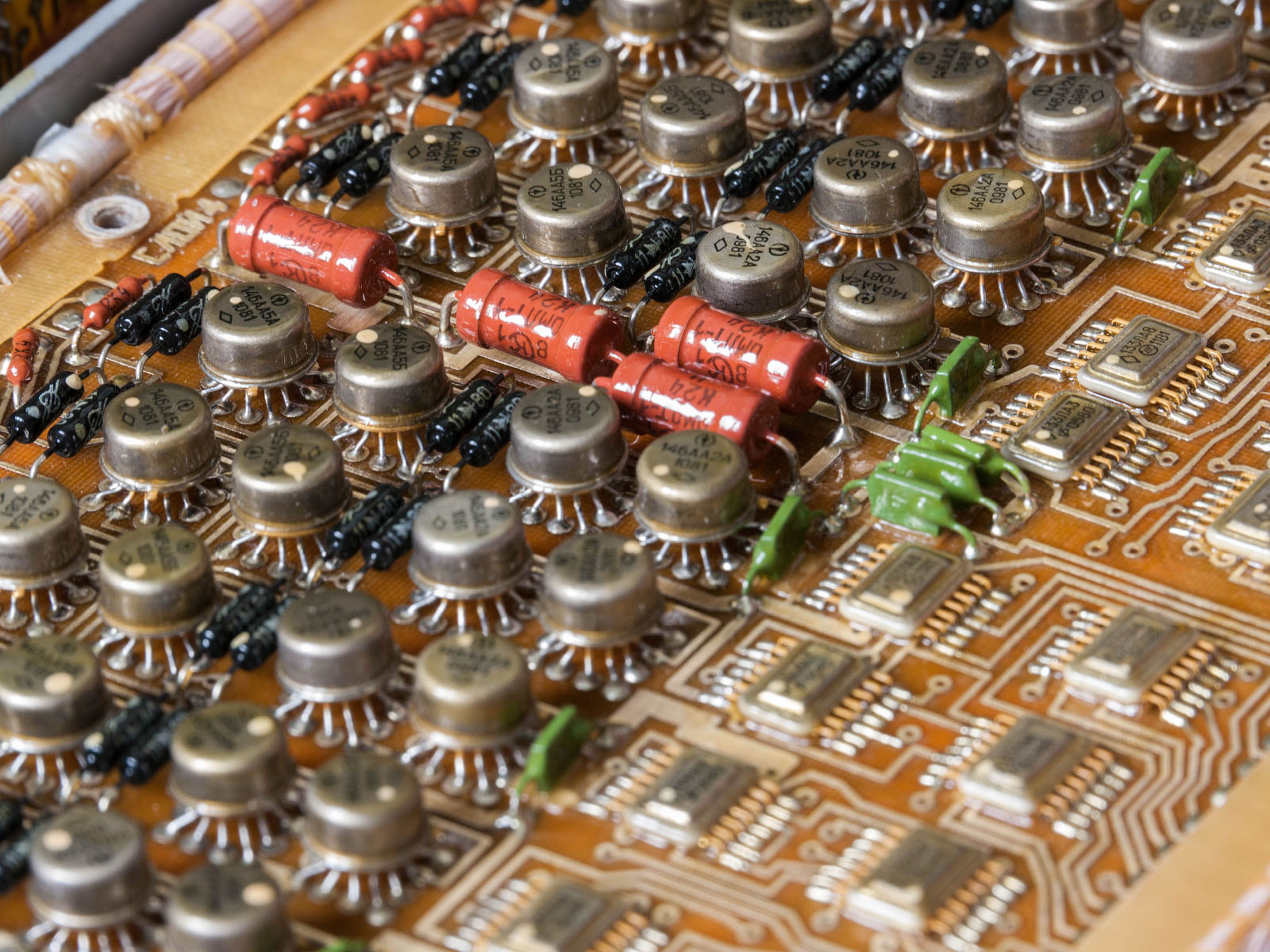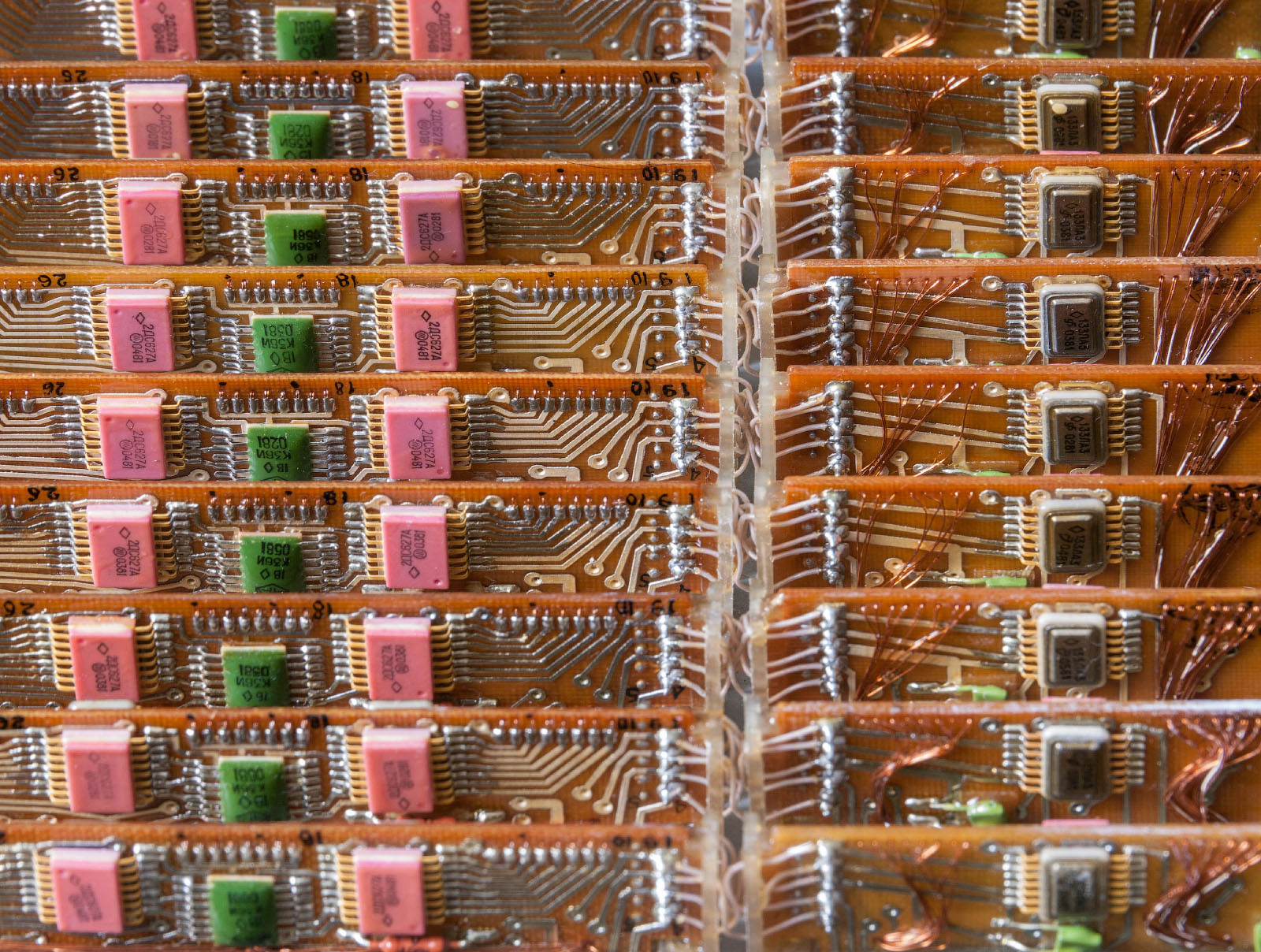DZU-8 core rope memory cassette
Purpose and description
Officially, the cassette is called MESU DZU-8 (magnetic-electronic system unit) (in Russian МЭСБ ДЗУ-8). Such cassettes were used in various military computing equipment of the Navy, including various mission computers of ships and sumbarines and in the "RI-1" special desktop computing device. It stored some software - testing and diagnostic programs, real-time operating system. DZU-8 is made in the form of a removable cassette, inserted vertically into the rack. On the back side there are guide pins, and on the front side, through which the cassette is connected to a computer. Numerous inscriptions and stamps are applied to the case. The cassette case opens into halves, connected only by internal wiring harnesses. External protective covers are also removable.
Internal structure and specifications
Each half of the case consists of two sections. One of them is occupied by storage U-shaped ferrite cores, and the second is occupied by the terminals of code wires (address buses) and electronic boards in two layers. The cores are accessed from the side of the protective covers. The entire memory part can be divided into four sections, two on each of the halves. Each of the halves consists of 144 cores (8 rows of 18 pieces), but is logically divided in half, which gives eight groups of 72 cores. The total number of cassette cores could be 576, but one group (72 cores) is left unstitched. The code wires are also divided into four sections, each 1024 wires. Thus, the memory capacity is 9 kilobytes per group, and the entire cassette is 63 kilobytes. If it had not been for the stitched group, the memory size would have been 72 kilobytes. On the opposite side of the ferrite cores there are narrow printed circuit boards with integrated circuits responsible for the operation of the reading system.
Other areas are occupied by printed circuit boards with a variety of logic elements. The boards are placed in two layers, on the lower ones there are diode assemblies - decoders. Due to the need to accommodate a large amount, an interesting sandwich montage was used.
Additional information
Developed by "Agat" Scientific Production Association and Leningrad production association "Ravenstvo". “Basalt” plant was specially built for the production of cassettes in Yerevan, but due to the low quality of the products, the production was transferred to the Ulyanovsk “Kometa” plant. Maked in 1982.
Images (click to enlarge)
